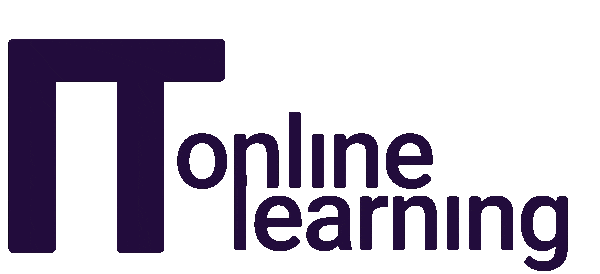Overview of the 2023 FIFA Women’s World Cup
The 2023 FIFA Women’s World Cup proved to be a successful tournament that was held in New Zealand and Australia for the 2023 edition.
This was the showpiece tournament where the best women players showcased their talent and skill and fought for the ultimate prize – the FIFA world cup trophy. And while there is a lot that can be taken away from this tournament besides the football, let’s focus on exactly that here.
In this post, we will share the numbers behind this tournament that reveal just how successfully Australia and New Zealand delivered a project.
The Numbers Behind the Women’s World Cup 2023 Edition
Attendance: averaged 30, 911 up from 21, 756 at the 2019 edition of the tournament held in France.
In the UK:
- A peak audience of 12 million viewers was recorded on BBC One in the UK – that is higher than the men’s Wimbledon final in July, which reached 11. 3 million.
In Spain:
- 5.6 million watched the final in Spain. Screen share for the final reached 65.7%, peaking at 71.1%.
This is Spain’s highest-ever recorded TV audience for a women’s football game.
In Australia:
- Australia’s defeat in the semi-finals against England drew 7.2 million viewers on Channel Seven, making it the most-watched match according to research firm OzTAM. The peak audience reached 11.15 million, marking a record high for the company since its establishment in 2001.
Global Television Audience
Television viewership is anticipated to surpass previous records at the Women’s World Cup, with an astounding 1.12 billion individuals worldwide tuning in for the tournament based on a FIFA survey conducted in 2019.
Prior to the start of the 2023 edition, Sarai Brennan, FIFA’s chief women’s football officer, expressed expectations of attracting an audience exceeding 2 billion viewers.
This year’s World Cup witnessed China achieving the highest TV audience for a single game when 53.9 million people tuned in to watch their match against England, despite ultimately losing.
The average TV audience for the 2019 Women’s World Cup final match amounted to an impressive figure of 82.18 million viewers.
The 2023 tournament witnessed an impressive total of more than 1.9 million fans flocking to the stadiums.
This surpassed the previous 1.35 million attendees at the 2015 Women’s World Cup held in Canada. * Australia and New Zealand boasted an average crowd size of 30,911, surpassing the previous record set in 2015 with an average of 26,000 per game.
How This Tournament Compares to Previous Years
In short, it surpasses previous tournaments regarding record television viewing figures, specifically for women’s football.
Also, this tournament drew a record number of fans at the stadiums compared to previous iterations.
And, as a company focused on helping people build project management knowledge and skills through project management qualifications, we have to congratulate the project management teams responsible for organising this global event successfully.
Planning Stadium Projects: Understanding FIFA’s Project Plan Document
Did you know that FIFA has very specific and detailed project plans?
This is known as a project plan.
A project plan in project management is a detailed document that outlines all the steps, tasks, and resources required to complete a project successfully.
It serves as a roadmap for the entire project, providing direction and guidance to all stakeholders involved.
The project plan includes essential elements such as goals, objectives, scope, budget, schedule, and roles.
It helps define the project’s boundaries, sets clear expectations, and ensures everyone understands their responsibilities.
It is meant for anyone involved in planning or delivering a stadium project, including project managers, stakeholders, and decision-makers.
It is important for these individuals to understand the key components of a project plan and how to use it to manage a stadium project effectively.
This project plan document exists because FIFA wants to ensure that all stadium projects are delivered successfully.
By providing this guidance, FIFA helps improve the quality of stadium projects and the overall experience for fans and spectators.
FIFA’s project plan document outlines and defines project phases. These include:
Initiation (or idea or vision) phase: The initiation phase marks the beginning of the stadium project, where the concept and vision are developed, and authorisation is acquired. This stage involves conceptualising the idea for the stadium, establishing its vision or project charter, and obtaining approval to proceed.
Definition phase: During this stage, the focus is on defining the project’s scope by outlining the desired outcome and necessary requirements. It involves conducting a feasibility study, creating a business plan, and identifying the user or employer’s needs for the project. The goal is to clearly understand what is needed to meet the project’s vision and objectives.
Design phase: In this stage, the stadium is created according to the user’s needs identified in the previous phase (how does the suggested design fulfil the user’s requirements from before?).
Preparation phase: The establishment of site and construction plans takes place (how will the design be brought to life?).
Construction phase: The actual construction of the stadium begins
Operation phase: Typically, the stadium’s operations and maintenance are overseen for a period of 30 to 50 years.
Can I tell you more?
You have read all the way here, and I feel maybe, you are interested in learning more about project management.
Or, even better, are interested in a project management career.
If so…
I’d like to introduce you to accredited courses and qualifications from ITonlinelearning.
ITonlinelearning offers only accredited project management courses and qualifications for people ready for the next level in their careers and life.
Additionally, we offer specialist certifications in the fields of :
These are qualifications accredited by some of the UK’s leading organisations:
PeopleCert, on behalf of AXELOS
APMG International
APM
PMI
BCS
CMI
CIPD
CompTIA
Digital Marketing Institute (DMI)





